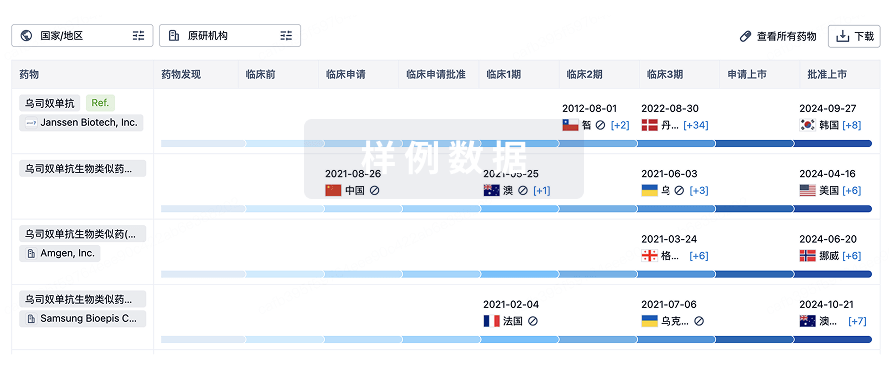预约演示
更新于:2025-05-07
GsMTx4
更新于:2025-05-07
概要
基本信息
非在研机构- |
最高研发阶段临床前 |
首次获批日期- |
最高研发阶段(中国)- |
特殊审评- |
关联
100 项与 GsMTx4 相关的临床结果
登录后查看更多信息
100 项与 GsMTx4 相关的转化医学
登录后查看更多信息
100 项与 GsMTx4 相关的专利(医药)
登录后查看更多信息
223
项与 GsMTx4 相关的文献(医药)2025-08-01·Cellular Signalling
Mechanical stress overload promotes NF-κB/NLRP3-mediated osteoarthritis synovitis and fibrosis through Piezo1
Article
作者: Su, Zishan ; Jie, Lishi ; Tian, Di ; Yu, Likai ; Zhang, Nongshan ; Wang, Peimin ; Zhang, Li ; Zhu, Wenhui ; Guo, Shaobo
2025-07-01·Brain, Behavior, and Immunity
Mechanistic insights into the neuroprotective effects of low-intensity transcranial ultrasound stimulation in post-cardiac arrest brain injury: Modulation of the Piezo1-Dkk3/PI3K-Akt pathway
Article
作者: Ma, Yannan ; Sun, Peng ; Zhou, Siyi ; Su, Kuan-Pin ; Bao, Banghe ; Jin, Qiaofeng ; Gu, Lulu ; Guo, Guangqi ; Xu, Li ; Xu, Shuang ; Li, Beibei ; Zhu, Jinpiao ; Liu, Qian
2025-06-01·European Journal of Pharmacology
Inhibition of Piezo1 ameliorates septic cardiomyopathy by blocking calcium-dependent PANoptosis
Article
作者: Teng, Fei ; Zhang, Yan-Ting ; Li, Hui-Hua
2
项与 GsMTx4 相关的新闻(医药)2023-07-17
·生物探索
自2019年底以来,SARS-CoV-2感染引发的新冠肺炎疫情给缺乏有效治疗手段的世界带来了巨大负担。SARS-CoV-2感染诱导严重的内皮病变,其特征是肺血管系统中大量内皮细胞损伤和微血栓聚集。此外,在患有严重新冠肺炎的人群中,广泛的微血栓和高凝状态更为常见,这表明肺内皮病是常见的新冠肺炎并发症。严重的新冠肺炎患者更容易出现肺血管内皮细胞损伤,如细胞凋亡和紧密连接丢失,以及精心策划的血管内凝血病,这增加了早期诊断这些综合征可能对这些患者大有裨益的可能性。然而,在死后肺中观察到的内皮病变是否是通过直接的病毒结合介导的仍然存在争议。2023年7月14日,广州医科大学王健及钟南山共同通讯在Signal Transduction and Targeted Therapy 在线发表了题为“SARS-CoV-2 spike protein receptor-binding domain perturbates intracellular calcium homeostasis and impairs pulmonary vascular endothelial cells”的研究论文,该研究揭示SARS-CoV-2刺突蛋白受体结合域干扰细胞内钙稳态并损害肺血管内皮细胞。暴露于SARS-CoV-2的刺突蛋白或受体结合域(S-RBD)显著影响内皮细胞并诱导肺血管内皮病变。在本研究中,使用血管紧张素转换酶2人源化近交系(hACE2 Tg)小鼠和培养的肺血管内皮细胞来研究刺突蛋白/S-RBD如何影响肺血管内皮。结果表明,S-RBD通过TRPV4的急性激活导致细胞内游离钙浓度([Ca2+]i)的急性到延长诱导,并导致培养的人肺动脉内皮细胞(PAEC)中机械敏感通道Piezo1和储存操作钙通道(SOCC)关键组分Orai1的延长上调。在机制上,S-RBD与ACE2相互作用,诱导涉及Orai1、Piezo1和TRPC1的簇的形成,促进Piezo 1和SOCC的通道激活,并导致细胞凋亡升高。这些作用被抑制S-RBD和ACE2之间结合的Kobophenol A或细胞内钙螯合剂BAPTA-AM阻断。GsMTx4阻断Piezo1和SOCC通过使升高的[Ca2+]i正常化,有效保护S-RBD诱导的hACE2-Tg小鼠肺微血管内皮损伤。与原型菌株相比,S-RBD的奥密克戎变异株(BA.5.2和XBB)诱导的细胞凋亡明显减轻。转录组学分析表明,原型S-RBD比德尔塔或Lambda S-RBD产生更严重的急性影响。总之,该研究提供了令人信服的证据,证明S-RBD可以通过与ACE2结合并通过上调Piezo1和Orai1触发[Ca2+]i来诱导持续的肺血管内皮损伤。靶向抑制ACE2-Piezo1/SOCC-[Ca2+]i轴是治疗S-RBD诱导的肺血管疾病的有效策略。据报道,在培养细胞模型和实验动物模型中,暴露于促进与宿主细胞质膜上受体结合的刺突蛋白或受体结合结构域(S-RBD),如血管紧张素转化酶2(ACE2),可以直接影响肺血管系统的内皮。在分子水平上,进行性血管内皮病是通过下调ACE2和线粒体损伤以及激活免疫反应(涉及血管内皮细胞和先天免疫细胞之间的串扰)等机制发展起来的。这些证据强烈表明,在没有完全病毒感染和随后诱导的微环境变化的情况下,特异性棘突蛋白/S-RBD-宿主相互作用可能足以损害肺血管内皮,并导致新冠肺炎的内皮病变和内皮功能障碍。然而,相关的潜在机制仍不清楚,需要进一步研究。研究报告了SARS-CoV-2或新冠肺炎感染人群中肺动脉高压(PH)的发生和发展。在感染SARS-CoV-2后,非重症监护室(ICU)和ICU人群中预测的PH患病率应分别为12%和39%。这些临床发现表明SARS-CoV-2、发育性肺血管损伤和肺动脉高压之间存在关联。与新冠肺炎相关的肺血管病与肺动脉高压具有许多病理生理学和病理生物学特征,包括平滑肌肥大和重塑、内皮功能障碍和微血管微血栓。在急性感染期间,肺血管中微血栓的增加可能会导致慢性血栓栓塞性PH的进展。在长期感染期间,持续的肺血管损伤和微血栓的积聚可能共同驱动长期的肺血管炎症和重塑,这表明PH是一种长期的新冠肺炎并发症,值得进一步评估和关注。先前的研究表明,内皮损伤在启动肺血管重塑和PH中起着至关重要的作用。内皮细胞死亡导致细胞凋亡和增殖之间的失衡,从而出现并促进管腔闭塞病变的建立。此外,内皮细胞损伤通过旁分泌机制刺激平滑肌细胞增殖和内/外膜肥大。这些机制共同促进了PH相关肺血管重塑的发病机制,这也是S-RBD诱导的血管损伤的潜在机制。SARS-CoV-2刺突蛋白受体结合域(S-RBD)诱导人肺动脉内皮细胞内钙稳态的急性到长期扰动(图源:Signal Transduction and Targeted Therapy )在已有知识的基础上,通过使用体内ACE2人源化近交系小鼠(hACE2 Tg)、体外培养的人和小鼠肺血管内皮细胞,本研究旨在系统地确定刺突蛋白/S-RBD对肺血管内皮和内皮细胞的作用,还探讨了刺突蛋白/S-RBD如何影响细胞内钙稳态并诱导血管内皮细胞损伤的潜在机制。这项研究首次证明,刺突蛋白/S-RBD可以通过依赖于S-RBD-ACE2相互作用、细胞内钙的存在和ACE2钙通道簇的形成的机制,影响Piezo1和SOCC等钙通道的激活和表达。这些机制被针对S-RBD-ACE2相互作用的特异性抑制剂、细胞内钙螯合剂或针对Piezo1和SOCC的抑制剂抑制。这些数据强调了钙通道在刺突蛋白/S-RBD诱导的肺血管功能障碍和内皮细胞损伤中的潜在作用和贡献。此外,通过使用特异性钙通道抑制剂,该研究结果有力地表明,靶向抑制细胞内钙调节可能是治疗S-RBD诱导的肺血管损伤的有力策略,为新冠肺炎相关肺血管疾病的治疗和长期新冠肺炎并发症的管理提供了新的见解。文章来源“iNature”责编|文竞择校对|文竞择End
往期精选
围观历史性突破!不需卵子和精子就可以合成人类胚胎
热文
富豪用儿子血浆“回春”科学吗?Science:血液牛磺酸缺乏驱动衰老
热文
世界首例!35岁的她,通过机器人操刀移植的子宫,成功诞下宝宝
热文为了避免心脏骤停,53岁的他成为“第一个”植入开创性除颤器的心脏病患者
热文
首次披露!175家生物制药公司的薪资数据:薪资中位数达20万美元
点击“阅读原文”,了解更多~
临床研究临床结果
2016-01-25
Dosing and Enrollment in HT-100 Trial Suspended: Updated February 4
Dosing and new patient enrollment in all cohorts of the HALO trial, a study evaluating the compound HT-100 in patients with Duchenne muscular dystrophy, a rare disease that results in muscle degeneration and premature death, are being suspended. We are saddened to report that one of the patients in the trial, receiving 60μg/kg/d (the highest dose in the study), is experiencing serious, life-threatening health issues, and the company is working with the FDA to analyze the situation. We do not yet know to what extent the patient’s health issues are related to HT-100 and/or to other factors.
Updated February 4: It is with great sorrow that we share that the brave young man who was experiencing serious, life-threatening health issues has passed away. We offer our deepest condolences to his family and loved ones. Akashi has initiated a comprehensive investigation, beginning with detailed data reviews and in vitro studies, to evaluate the extent to which the patient’s health issues are related to HT-100 and/or to other factors. We will share updates as we reach conclusions in the investigation.
What steps is Akashi taking to analyze the situation?
Updated February 4: Akashi has initiated a comprehensive investigation, which includes a careful review of all patient records, with a particular focus on this young man’s record, and is initiating the first in a series of studies to further analyze what happened. Experts from outside the company are helping Akashi’s scientists and clinicians in these efforts. We continue to work with the FDA, and based on what we find, our research program will determine additional protective measures, if any, that should be included in the HT-100 program.
Have health issues of this kind previously been reported in the HALO trial?
None of the other patients in the clinical program have experienced a health issue of this kind or of this severity. To date, patients in the three lower-dose cohorts have been treated for between 11 and 19 months with HT-100, amounting to more than 20 patient-years of favorable data, with no other serious events related to study drug, while this patient had been receiving HT-100 at higher doses for approximately two weeks. An interim safety and efficacy analysis of HALO released in June of 2015 showed promising results for boys and young men enrolled in the HT-100 trial at lower doses, including data supporting improvement in muscle strength, with no serious adverse events related to the study drug.
Why has Akashi suspended the trial?
The trial has been suspended, based on discussions with the FDA, to allow us time to better understand the circumstances that led to this patient’s experiences. We will continue discussions with the FDA and will provide information once the investigation is complete. Our earlier-stage clinical and preclinical programs in Duchenne muscular dystrophy, with experimental compounds DT-200 and AT-300, are not affected.
When will the trial be restarted?
Our intention is to restart the trial once our investigation into the causes of this patient’s experiences is complete, and Akashi and the FDA are satisfied that any measures that might be necessary can be put in place to address these causes. As we are at the very beginning of the investigation, we cannot provide a projected timeline. As always, our first priority is patient safety.
What should patients enrolled in the trial, or planning to enroll in the trial, know?
If families of patients participating or planning to participate in the HT-100 trial have any questions, they may contact Akashi at trialinfo@akashirx.com or the principal investigator at their clinical site.
临床研究
100 项与 GsMTx4 相关的药物交易
登录后查看更多信息
研发状态
10 条进展最快的记录, 后查看更多信息
登录
| 适应症 | 最高研发状态 | 国家/地区 | 公司 | 日期 |
|---|---|---|---|---|
| 杜氏肌营养不良症 | 临床前 | 美国 | - |
登录后查看更多信息
临床结果
临床结果
适应症
分期
评价
查看全部结果
| 研究 | 分期 | 人群特征 | 评价人数 | 分组 | 结果 | 评价 | 发布日期 |
|---|
No Data | |||||||
登录后查看更多信息
转化医学
使用我们的转化医学数据加速您的研究。
登录
或

药物交易
使用我们的药物交易数据加速您的研究。
登录
或

核心专利
使用我们的核心专利数据促进您的研究。
登录
或

临床分析
紧跟全球注册中心的最新临床试验。
登录
或

批准
利用最新的监管批准信息加速您的研究。
登录
或

生物类似药
生物类似药在不同国家/地区的竞争态势。请注意临床1/2期并入临床2期,临床2/3期并入临床3期
登录
或

特殊审评
只需点击几下即可了解关键药物信息。
登录
或

Eureka LS:
全新生物医药AI Agent 覆盖科研全链路,让突破性发现快人一步
立即开始免费试用!
智慧芽新药情报库是智慧芽专为生命科学人士构建的基于AI的创新药情报平台,助您全方位提升您的研发与决策效率。
立即开始数据试用!
智慧芽新药库数据也通过智慧芽数据服务平台,以API或者数据包形式对外开放,助您更加充分利用智慧芽新药情报信息。
生物序列数据库
生物药研发创新
免费使用
化学结构数据库
小分子化药研发创新
免费使用

